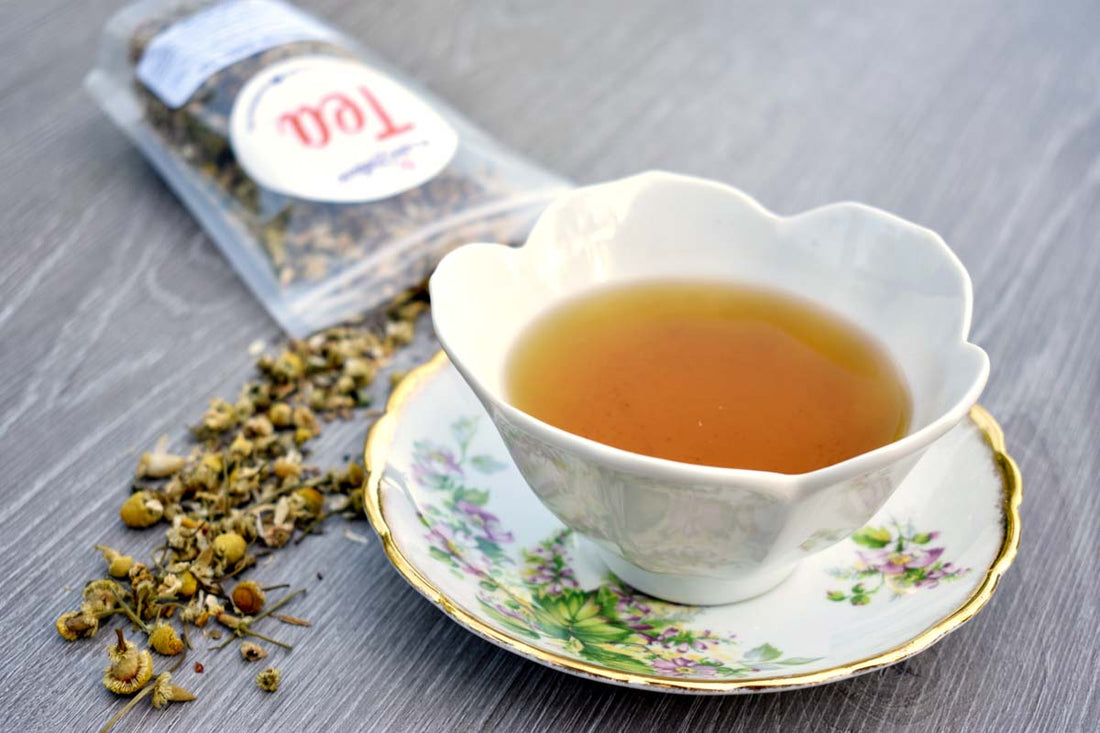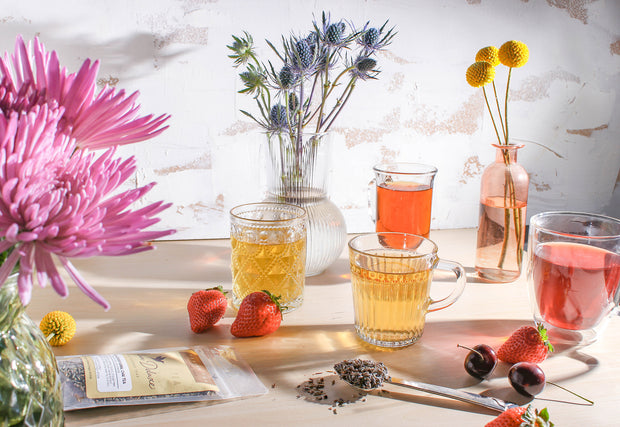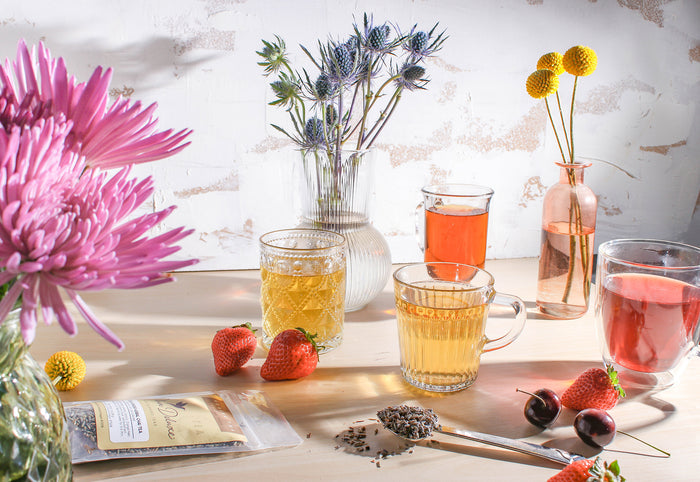So, what's the best tea for headaches? First, the important stuff: understanding what kind of headache you have.

Wait, What? There’s More Than One Kind of Headache?
For those who haven’t suffered from a headache before, I think there’s a common misconception that they’re all the same. For those of us who have endured, we know that’s the furthest from the truth! In fact—it’s official—there are over 150 different types of headaches! Yes, I said that correctly! However, for the benefit of ease, we can break these down into four primary categories: migraine headaches, tension headaches, cluster headaches, and hypnic headaches.
There are, of course, differences between these. Migraine headaches (typically) are on one side of the head. It should be noted, these can last hours to days, and are often accompanied by a sensitivity to light and sound and can cause nausea and/or vomiting. Furthermore, unlike other types of headaches, migraines are genetic. If you’re unfortunate enough, like me, you may find there is a history in your family of them. Thankfully, nowadays there are many options to help treat the symptoms, including some good teas for headaches.
Secondly, we have tension headaches, which are noted by pain that surrounds the entirety of the head: temples, forehead, and base of the skull. These are the second most common headaches. A little tip? When this kind of headache busts out on me, and this seems counterintuitive, but a tight Velcro strap or cloth band around my head (where a baseball cap would sit) for 10 minutes can also help in relieving the symptoms.
Next up are cluster headaches. One would believe they’re a “cluster,” such as several in a location, but this isn’t the case. What defines a cluster headache is the duration and location. Cluster headaches are shorter-lived, than their adversaries’ (migraines), lasting 20 minutes to two hours and always on one side of the head. Symptoms include a droopy eyelid, tearing, stuffy nose, and even an enlarged pupil.
Last, but not least by any means, are hypnic headaches. In all honesty, I’ve never heard of these until researching. I have suffered from the previous types of headaches, but this kind was new to me. Hypnic headaches are unique in that they occur at night at the same time, and mirror cluster headache symptoms. What’s important to note here is that they generally occur in 40–80-year olds and are short in duration: 15-60 minutes long.
Thankfully, as with all my headaches, I have found relief with good teas for headaches! Read on to discover how to get back to feeling great!

A History of Plants
We love ginger!
Why?
Because this root is oh-so-amazing at helping to reduce the effects a headache causes, such as nausea, vomiting, and sensitivity to light.
According to a 2013 research review article, which discusses using ginger in the prevention of nausea and vomiting, this herbal medicine has been widely used for over 2,000 years to help successfully treat nausea.
In yet another research review article ginger and its rhizomes, pronounced rai-zowmz, have long been successfully used to treat a variety of other conditions such as arthritis, sprains, sore throat, cramps, fever, asthma, constipation, and bloating just to name a few. What’s not to love?
Ooh-la-love lavender! What’s great about lavender is that (simply) the aroma can help to ease headaches. Drinking teas with lavender are a great treat to you and may benefit in easing your headache.
A 2012 study suggests that inhalation of lavender essential oil may be an effective and safe treatment modality in the acute management of migraine headaches. In an article by Country Living, Isha Gupta, a neurologist shares, “What makes lavender so useful in relation to headaches and anxiety specifically is that it provides a similar effect as pharmaceutical relaxants known as benzodiazepines”.
I’d like to extend an invite to chamomile as a third helpful tea choice as a best tea for headaches contender. Chamomile is great for reducing oxidative stress. It helps with anxiety and inflammation as well. Due to the fact headaches often bring on a myriad of inflammation, chamomile is great to help combat this. Sometimes the simple act of being overwhelmed can trigger a headache, so chamomile may help lower your stress and anxiety levels, leading to a freeing of your headache episode.
Last but not least, is peppermint. According to a 2016 study on peppermint oil in the treatment of tension-type headache, this herb has “proven to be significantly more effective than placebo in controlled studies.” Peppermint acts as a pain reliever and muscle relaxer, which is key when working with tension headaches. We need all the “release” we can get!

The Best Tea for Headaches—Easy Choices
Plum Deluxe offers a nice selection of worthy choices that may help to alleviate some of your headache symptoms.
First up is our Cuddletime herbal tea which is a delightful balance of chamomile and mint—two of the herbs we discussed above. This is great at bedtime, as the name suggests, but when you’re facing a painful showstopper of a headache, this may be just what you need!
Nightcap herbal tea is another one of our best teas for headaches. This blend features peppermint and valerian root. Both are known to be relaxing herbs—calm the mind and body and let the relief begin!
A final recommendation of mine is our Calm Chamomile Bloom herbal tea. With a beautiful eye-catching color array, it’s just as good for the head as it is on the eyes. This is a caffeine-free mix of calming chamomile, rose, lavender, and lemon balm. Need I say more? Do yourself a favor and make a cup today!
*This content is not intended to be a substitute for professional medical advice, diagnosis, or treatment. All information and resources found within this article are based on the opinions of the author. Always seek the advice of your physician or other qualified health providers with any questions you may have regarding a medical condition.

![Spring Break Tea Variety Pack [6-Pack Variety of Flavors]](http://www.plumdeluxe.com/cdn/shop/files/spring-break-pack.jpg?v=1740682266&width=165)















